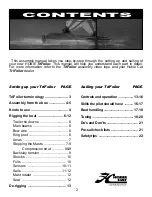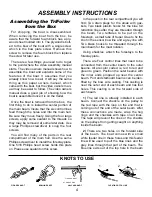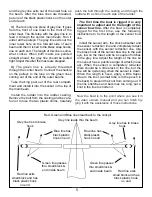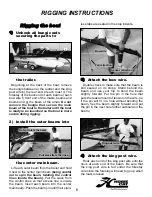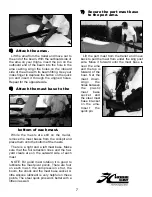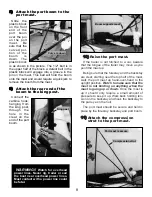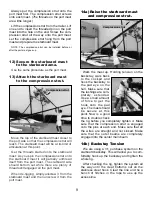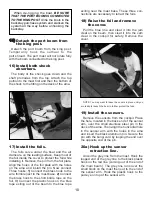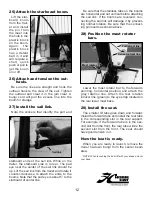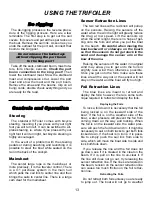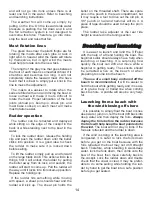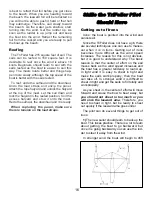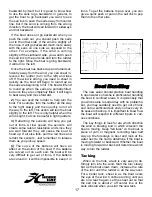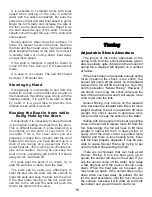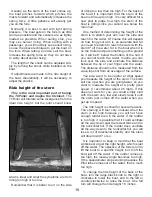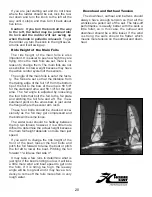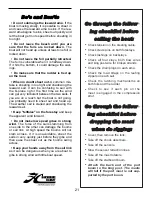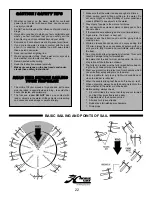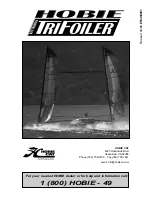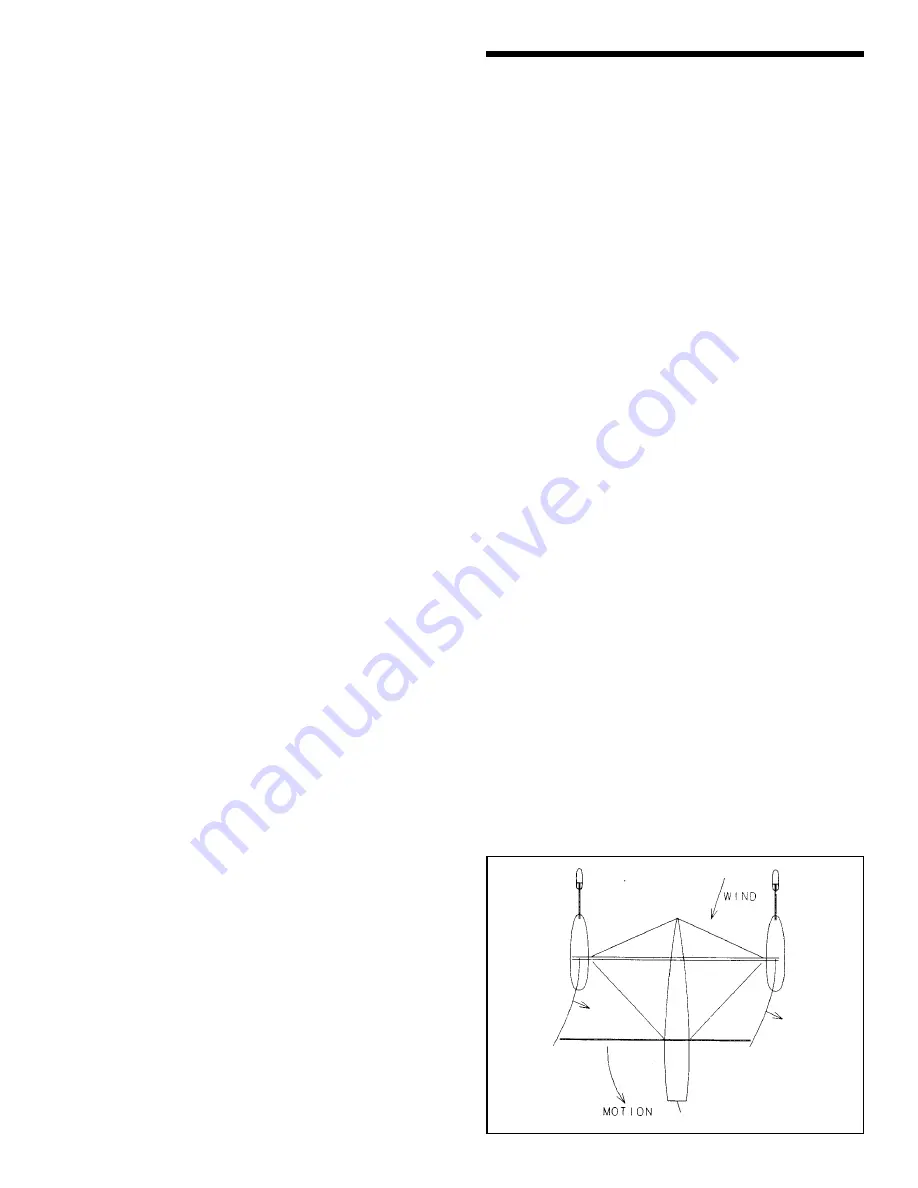
is best to retract that foil before you get close
to the beach. When you are heading toward
the beach, the leeward foil will be retracted so
you will not be able to push it hard or that hull
may submerge. Therefore, sail slowly toward
the beach. As the water gets shallow, start
turning into the wind. Get the rudder up. As
soon as the rudder is up, jump out and keep
the boat into the wind. Retract the remaining
foil from the cockpit and you are ready to pull
the boat up the beach.
Reefing
The TriFoiler has 215 square feet of sail. The
sails can be reefed to 150 square feet. It is
desirable to reef once the wind is above 16
knots. Beginners should learn to sail with the
sails reefed as the boat is easier to sail this
way. The masts rotate better and things hap-
pen more slowly, although the top speed of the
boat is better with the sails reefed.
To reef: undo the outhaul and the downhaul.
Undo the load straps and unzip the panel.
Attach the rope halyard and unlock the halyard
at the top of the mast. Let the sail down and
lock the halyard in the reefed position. Coil the
excess halyard and stow it onto the mast.
Redo the outhaul, the downhaul and it is ready.
When replacing the panel, make sure
there is tension on the load straps.
16
Skills the TriFoiler Pilot
Should Have
Getting out of Irons
Irons: the boat is pointed into the wind and
cannot sail.
Since the TriFoiler does not have a jib, there
are several techniques one can use to maneu-
ver when it is in irons. Getting out of irons
becomes more difficult as the wind speed
increases. The reason for this is not obvious,
but it is good to understand why. The basic
reason is that the center of effort on the sail
moves back as the wind speed increases and
the boat has a greater tendency to round up.
In light wind it is easy to sheet in tight and
make the sails work properly; then the boat
can take off. In stronger wind it is difficult to
sheet in tight and get the sails to fill totally and
work properly.
As you sheet in, the center of effort will move
forward and cause the bow to bear away, but
you should not sheet in too much or you
will sink the leeward ama
. Therefore, you
need to sheet in tight, but be ready to sheet
out quickly if the leeward ama goes under.
The pilot can do several things to get out of
irons:
1)
The new sailor should learn to back up the
boat. This takes practice. There is a lot to learn
about getting the boat to go backward, but
once it is going backward you can use the rud-
der to steer it away from the wind.
In stronger wind the boat will begin to drift
Summary of Contents for TriFoiler
Page 1: ...ASSEMBLY MANUAL...

